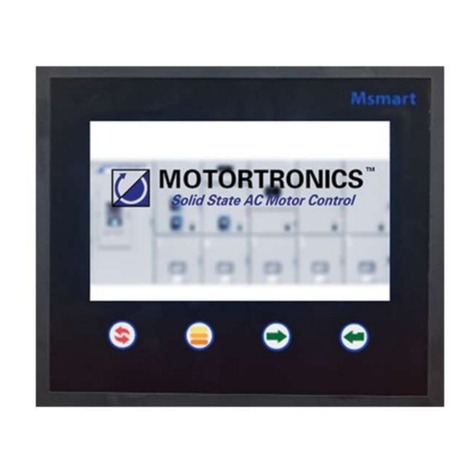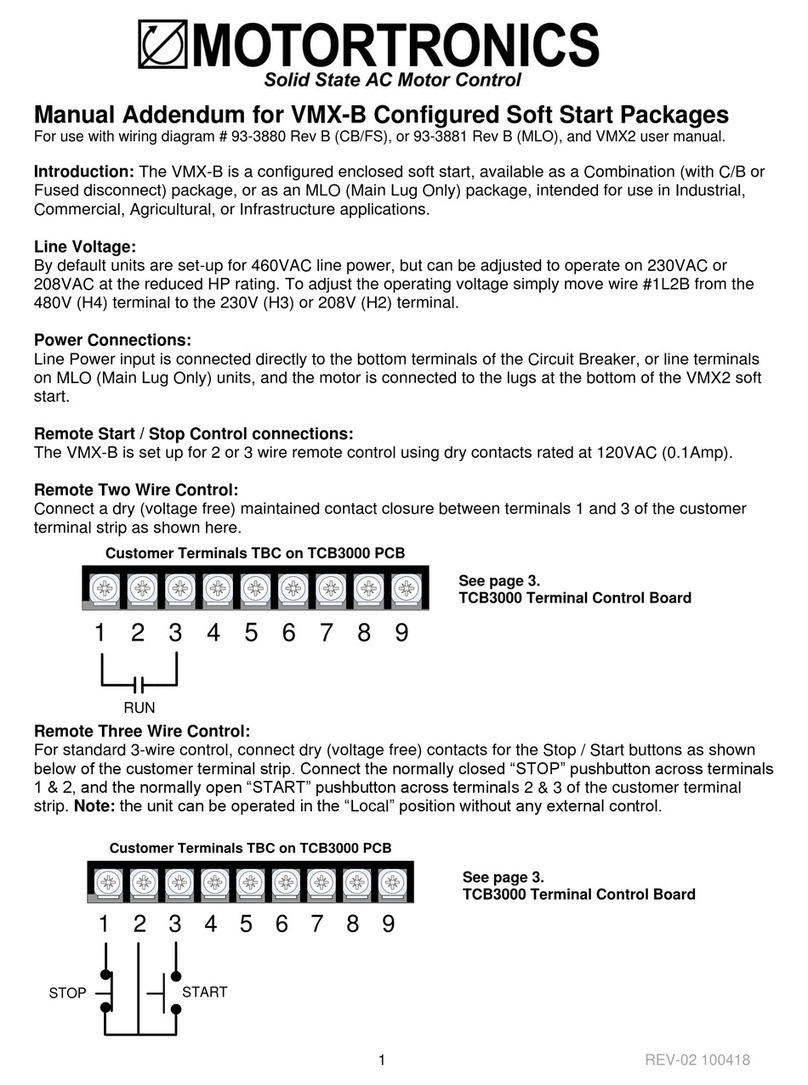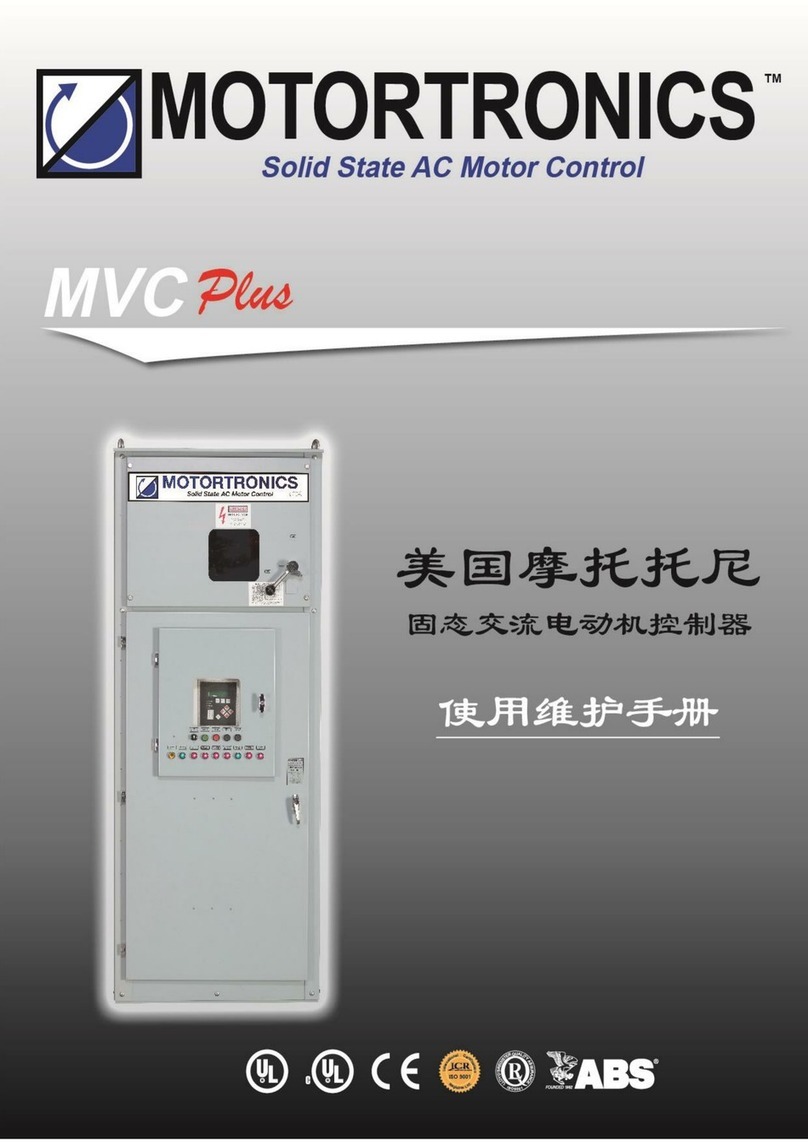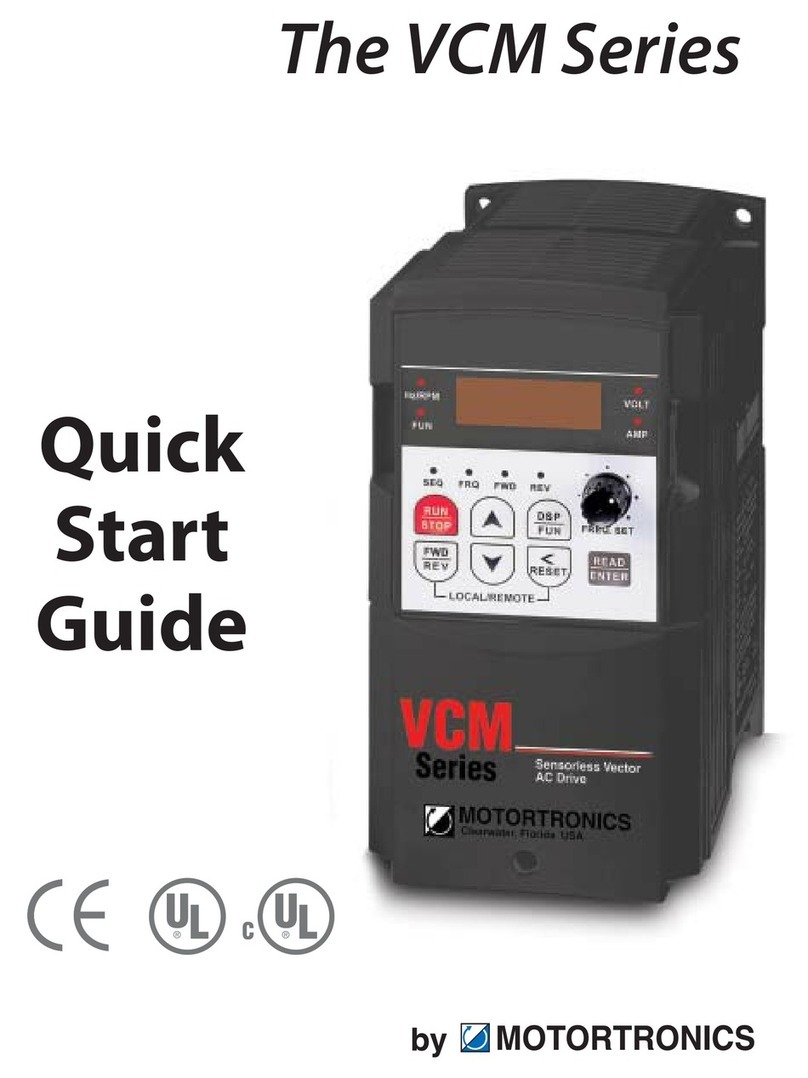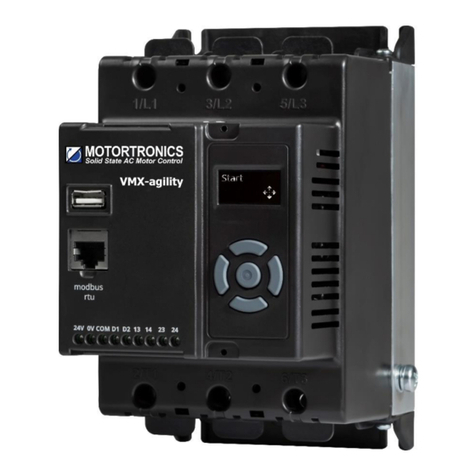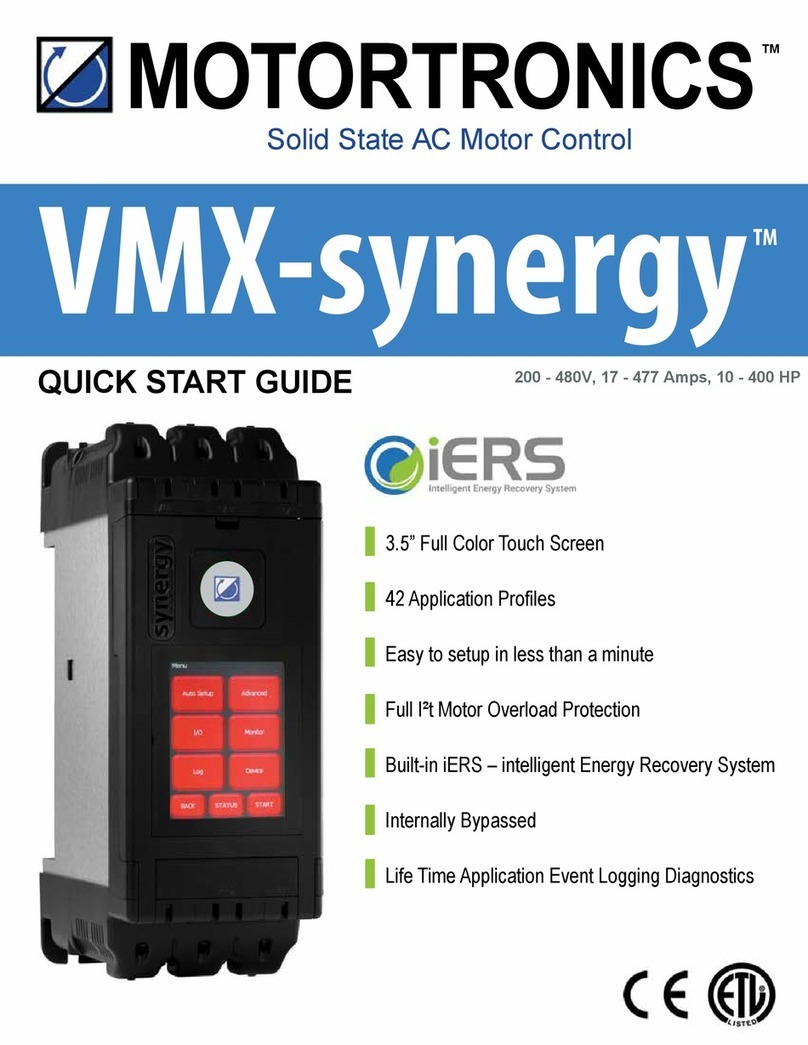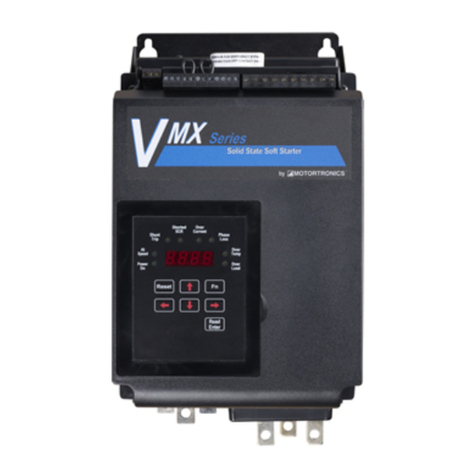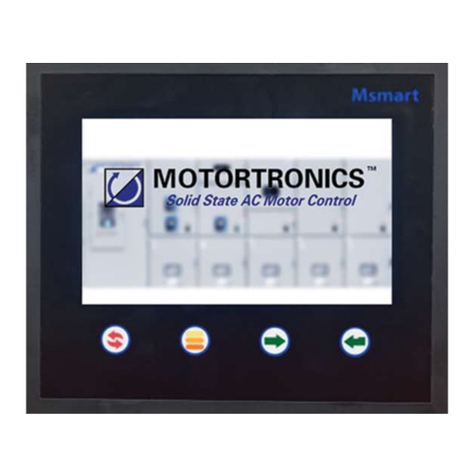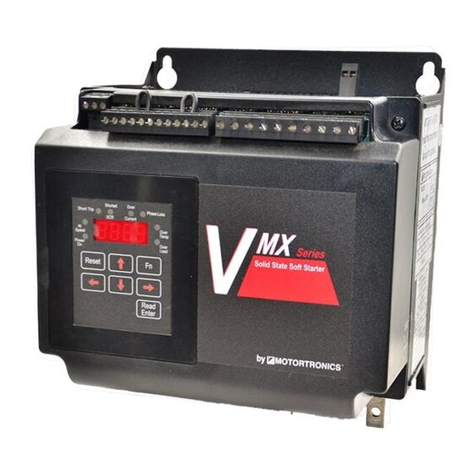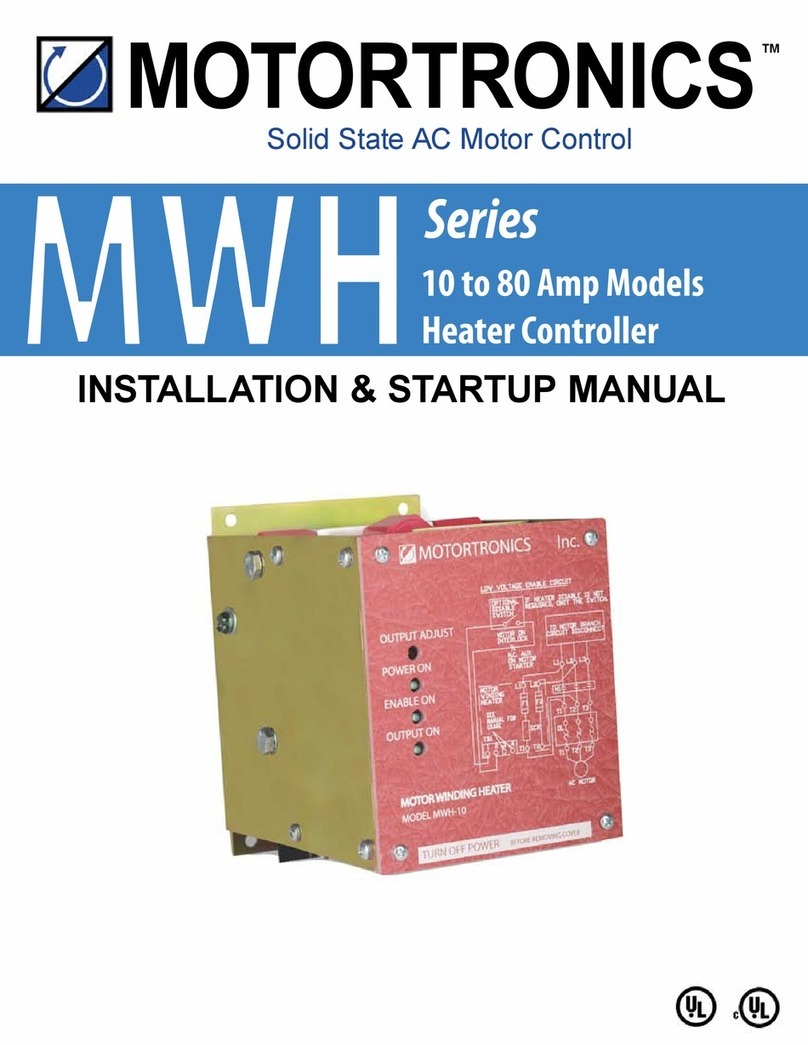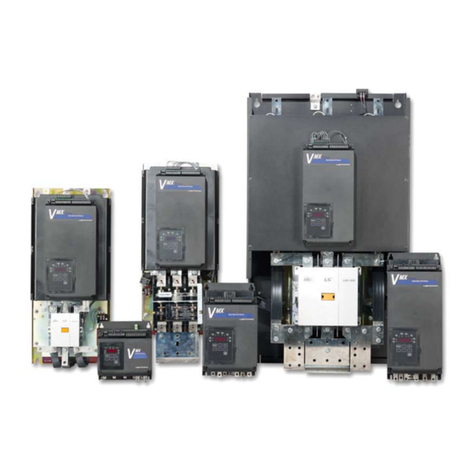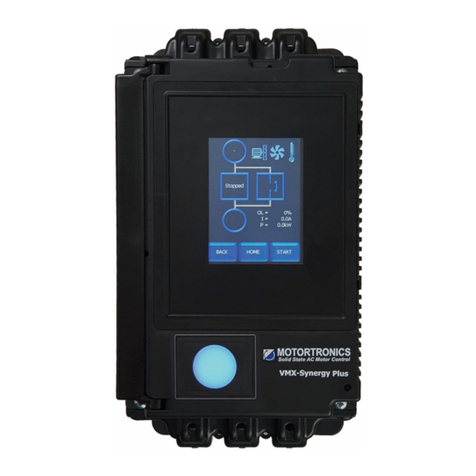
Motortronics
-2-
XLS Series Solid State Soft Starter 39 - 1250A
2.1 Receiving and Unpacking
Upon receipt of the product you should immediately do the following:
•Carefully unpack the unit from the shipping carton and inspect it for
shipping damage (if damaged, notify the freight carrier and file a
claim within 15 days of receipt).
•Verify that the model number on the unit matches your purchase
order.
•Confirm that the ratings sticker on the unit matches or is greater
than the motor’s HP and current rating.
2.2 Location
Proper location of the XLS Series is necessary to achieve specified
performance and normal operation lifetime. The XLS Series should
always be installed in an area where the following conditions exist:
•Ambient operating temperature:
Chassis unit: 0 to 50°C (32 to 122°F)
Enclosed unit: 0 to 40°C (32 to 104°F)
•Protected from rain and moisture
•Humidity: 5 to 95% non-condensing
•Free from metallic particles, conductive dust and corrosive gas
•Free from excessive vibration (below 0.5G)
•Open panel units must be mounted in the appropriate type of
enclosure. Enclosure size and type must be suitable to dissipate
heat generated by the soft starter. Contact factory for assistance in
sizing enclosures.
2.3 Initial Unit Inspection
• Make a complete visual check of the unit for damage which may
have occurred during shipping and handling. Do not attempt to continue
installation or start up the unit if it is damaged.
• Check for loose mechanical assemblies or broken wires which may
have occurred during transportation or handling. Loose electrical
connections will increase resistance and cause the unit to function
improperly.
• Prior to beginning the installation, verify that the motor and XLS unit
are rated for the proper amperage and voltage.
2.4 Warning!
Do not service equipment with voltage applied! The unit can be
the source of fatal electrical shocks! To avoid shock hazard,
disconnectmainpowerandcontrolpowerbefore working on the
unit. Warning labels must be attached to terminals, enclosure
and control panel to meet local codes.
Chapter 2 - Installation
